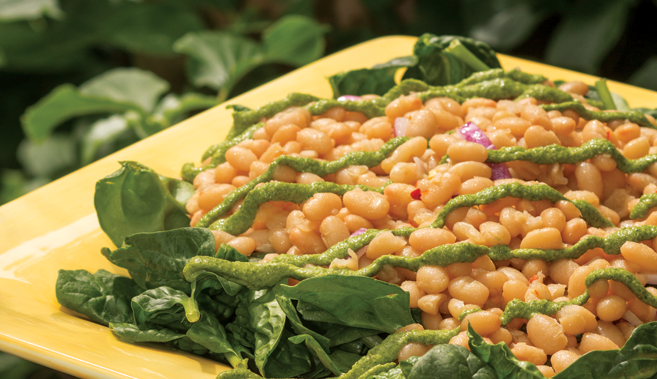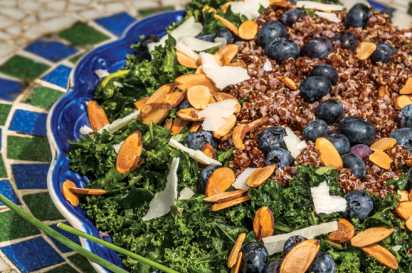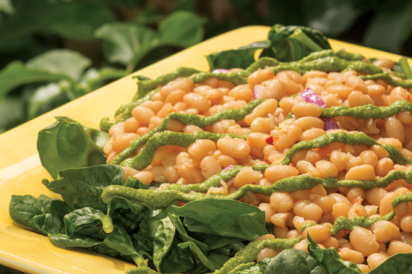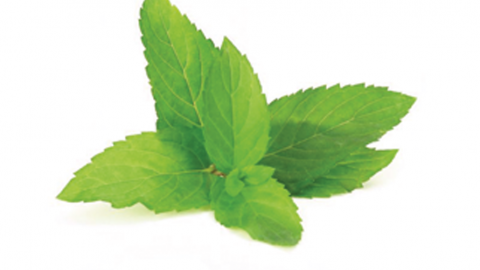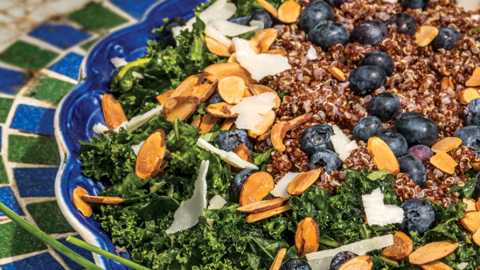Cooking Fresh: Pesto Change-o
For many of us, the world of “pesto” begins and ends with pesto alla Genovese, the Italian basil-garlic mixture thickened with pine nuts and Parmesan cheese.
The first time we make pesto we might hew close to the origins of the recipe. But if you put three basil plants in your garden, you’ve probably spent more than one afternoon with your blender or food processor (each has its advantages and drawbacks). Those are days you’ve likely run out of pine nuts and then you run out of cheese and your pesto becomes a simple paste of basil, garlic and olive oil. Frozen in cubes and then bagged for lengthier storage, these cubes of “almost pesto” seem to work as well in many dishes as the classic recipe.
The truth is, growing a variety of herbs in your yard would give you a few more tools in the culinary toolbox than classic pesto alla Genovese. There are other classics: My favorite might be chimichurri, the Argentinian “paste” that’s made with parsley and oregano, with vinegar and a spicy chili pepper added to the blend. There are more variations on chimichurri than there are on pesto. Some include cups of cilantro as well.
Once you’ve spent a little time with herb pastes, your comfort level will begin to increase and those large shrubs of parsley and tarragon and rosemary in your yard will begin to inspire mixtures that can add flavor to grilled meats and salad dressings all summer long.
In his cookbook Plenty, Yotam Ottolenghi blends parsley, cilantro, tarragon, dill and mint in a paste that he uses to season couscous. It’s an approach that makes sense when your herbs are proliferating.
And it works with most herbs, with the possible exception of thyme, whose leaves are too tiny to pick and whose stems get woody in very short order. But if stems are tender, thyme adds wonderful flavor.
Using fresh herb pastes not only improves the flavor of our food, but our health as well. The leaves contain a smorgasbord of polyphenols with benefits that “include their possible role in conferring protection against cardiovascular and neurodegenerative diseases, cardiovascular disease, cancer and type 2 diabetes,” according to a research published in The Journal of Molecular Sciences three years ago.
Anyone who has ever said that healthy food tastes terrible hasn’t marinated flank steak in a mixture of oil, vinegar and mint pesto.
Freezing herb pastes is a way to trap those summer flavors for the winter cooking. Ice cubes of frozen basil pesto can be tossed in at the end of making vegetable/bean soup to turn it into minestrone.
Get the recipes at the upper left of this page.


